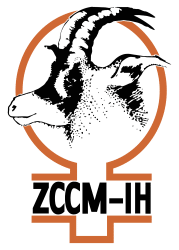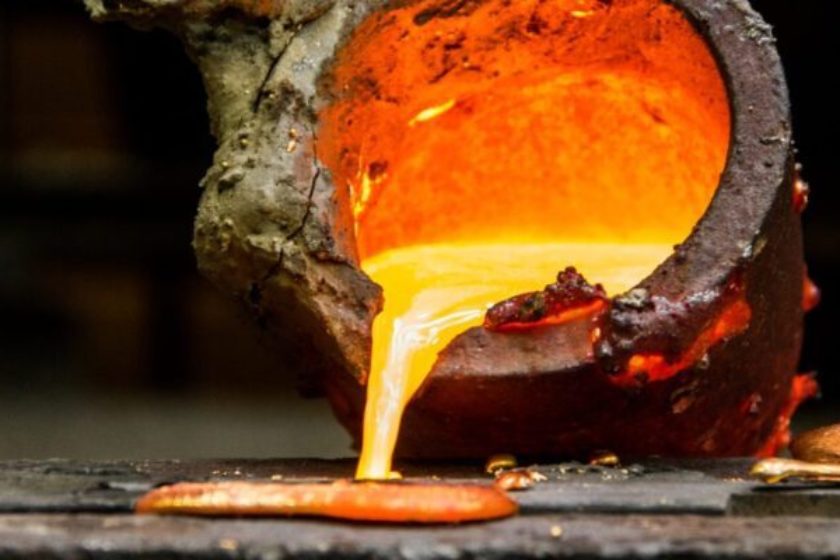24th May 2020, Lusaka, Zambia – ZCCM Investments Holdings (ZCCM-IH) has prioritised investments in the mining sector particularly in other minerals such as gold and manganese. As mandated by Government to harness the gold potential in the country, ZCCM-IH strategy is to forge partnerships with any industry player with in the gold value chain. The partnership with Karma Mining Services and Rural Development is one such partnership were the joint venture (Consolidated Gold Company Zambia) is entirely focused on gold processing.
The following account provides clarity on various issues raised by stakeholders:
- The partnership between ZCCM-IH and Karma Mining Services and Rural Development (Karma)
Karma came into Zambia in 2016 and registered the company in November 2018. Just like any foreign investor they came in the country in search of investment opportunities in the gold mining sector. They first started with the Ministry of Commerce, Trade and Industry, and went through the Zambia Development Agency to apply for an investment licence. Their key interest was only in setting up gold processing lines in the gold value chain in which they possess vast experience and expertise from their country of origin – Sudan.
Karma first embarked on talking to existing local small scale gold mining licence holders in the country for partnerships in processing their gold ore, particularly in Eastern Province, before setting up the company in Zambia. With established potential partnerships with these local mining licence holders, they applied for a Mineral Processing Licence through the Ministry of Mines and Minerals Development to enable them set-up gold processing plants.
Instead of them doing it entirely on their own, and engage commercially with these local small scale licence holders, they were advised by the Ministries of Commerce, Trade and Industry and the Ministry of Mines to partner with ZCCM-IH, seeing that ZCCM-IH was now mandated to drive the gold national agenda, with gold being declared a strategic mineral. In fact, the granting of the Mineral Processing Licence to Karma was dependent on them partnering with ZCCM-IH.
The two Ministries should actually be applauded for their pro-activeness in seeing that any investor coming to invest in the gold sector now, should partner with ZCCM-IH.
We must also understand that the sole business of the JV between Karma and ZCCM-IH is ONLY in gold processing. Karma does not own any gold exploration or mining licences, and will not own any of these, except for Mineral Processing Licences. - Shareholding of 45% stake in Consolidated Gold Company of Zambia (CGCZ)
ZCCM-IH undertook its own due diligence on Karma who had already signed agreements with two existing local small scale gold mines to start processing gold. Seeing that Karma was bringing on board the machinery and vast technical expertise and know-how in GOLD PROCESSING, ZCCM-IH entered into a partnership with Karma to form the Joint Venture – Consolidated Gold Company Zambia Ltd – and negotiated for a 45% stake in the JV. In addition to this, it is enshrined in the agreement with Karma that ZCCM-IH will be able to increase its stake in CGCZ or own it entirely after five years. This period will ensure knowledge and skills transfer in running the operations of gold processing and ensure the business is established successfully.
Further, not only does ZCCM-IH have this significant minority stake, ZCCM-IH has strategic management control in the company and is actively involved in the operations for direction. For instance, the Chief Financial Officer and procurement officer are appointed by ZCCM-IH, and additionally a technical person, a metallurgist is attached to the JV.
Holding a significant minority or majority stake in new investments with investors coming to partner with ZCCM-IH, with some level of control and participation in strategic management positions, is part of our new strategy aimed at ensuring ZCCM-IH gets value and ensures checks and balances in the running of these new entities. - The benefits of the partnership between Karma and ZCCM-IH in CGCZ
It is all about empowerment of the local small scale gold miners. A lot of small scale licence holders have struggled to develop their mines due to lack of resources to conduct exploration to estimate the resources. Most of them have been mining alluvial gold which only involves sifting through gravel to separate the pieces of gold, and can be done by a single miner with a gold pan, by washing the ore in water.
However, the process of hard rock gold mining and processing requires professional technical expertise for gold to be extracted; it is found in rocks which are supposed to be extracted from beneath the ground, crashed and milled into very fine particles, then chemically processed using leaching processes to extract the gold.
CGCZ is partnering with these existing small scale licence holders to set-up gold processing lines for all the types of gold ore materials; they are also being helped with technical expertise to open up gold veins by providing access to earth moving machinery as well. All this will see a boost in their gold production for their benefit, and that of the country at large, as we develop this sector to
bring about formalisation and regularisation. Again, knowledge and skills transfer in gold processing to these local licence holders will be another benefit.
As such, any current licence holder is free to partner with any investor to mine and process the gold in their licence area. There are currently small scale licence holders who are already doing so with other foreign partners other than CGCZ or Karma or ZCCM-IH.
The industry traditionally has remained unformalised and a lot of illegal mining has been taking place since time in memorial. And there are sections of society particularly foreigners that have been massively benefiting from this illegality. There are no formal records of how much gold is siphoned and smuggled out of the country.
There are over 60 spotted gold mining areas around the country, and the locals are currently mining. CGCZ is only present in Rufunsa and Mumbwa; and in Mwinilunga ZCCM Gold Company will entirely be responsible for mining and processing operations. CGCZ is not participating in the Kasenseli gold mine as alleged in social media commentary. - The CGCZ and Array Metals Joint Venture
The partnership between CGCZ with Array Metals is another JV where they (Array Metals) hold the exploration licence in Mumbwa, and have invested millions of dollars in conducting geological exploration to estimate the gold resources. Again, they could have started processing gold on their own with any investor, considering it is their licence. But they approached CGCZ for a JV in gold processing seeing what CGCZ is already doing with other small scale licence holders in Eastern Province. They saw it fit to have CGCZ come on board to invest in processing their ore materials and negotiated a revenue split of 65% for CGCZ and 35% as licence owners.
So any Zambian can still approach Array Metals to partner with them be it in mining or processing, seeing they have a large scale exploration licence in Mumbwa, and the JV with CGCZ is to process only a portion of the same over a period of time. - About ZCCM Gold Company
Early this year, ZCCM-IH formed ZCCM Gold Company to oversee and undertake investments in the gold sector’s value chain.
ZCCM Gold is owned 51% by ZCCM-IH and 49% by the Ministry of Finance, and was formed after CGCZ was established and already operational.
ZCCM Gold will invest in the entire value chain starting from gold exploration, mining, processing, refining, trading and beneficiation. It will hold its own licences in mining in other gold occurrence areas. The first project is the Kasenseli gold mine which will be a large scale mining and processing operation. ZCCM Gold is in charge of all the operations of the project. A
Special Purpose Vehicle is being formed which is comprised of ZCCM Gold as majority shareholder, alongside the previous licence holders who are Zambians and the Chiefdom Trust as equity partners.
CGCZ or Karma are not party to the Kasenseli project. - The role of ZCCM Gold Company
The mandate given to ZCCM-IH to harness the gold sector is being implemented by ZCCM Gold. ZCCM Gold started buying gold mined by artisanal gold miners in February this year, by providing an open market and competitive pricing as the first step towards formalising the industry.
Gold mining activities have been taking place for years albeit illegally. And now there is a pro-active attempt to formalise the small scale and artisanal gold mining sector. So far, Government has given artisanal miners gold panning certificates to legalise their alluvial or riverbed gold mining activities. ZCCM Gold is working with these licenced artisanal gold miners by providing them with gold equipment, access to earth moving machinery, and offering technical expertise among others. Again, this is another avenue in which citizen participation in the gold sector is being encouraged and promoted.
As ZCCM Gold build up gold stocks, and get a fair understanding of gold production in the country, ZCCM Gold will set-up a gold refinery in future so that we also start producing gold bullions, and also have a beneficiation line to make jewellery among others.
So, there are vast business opportunities in the gold value chain, and any Zambian can participate. In addition, ZCCM Gold will partner with any local licence holder to conduct exploration and mining were potential viability is established. - Technical expertise in gold processing
Indeed, alluvial gold can easily be obtained on the surface. But as the resource gets deeper it would require huge capital outlay to mine. At Kansanshi Mine for example, gold is a by-product of a huge mining operation, and only produce an annual average of 5 tonnes of gold.
ZCCM-IH is open to any local Zambians with this technical expertise in gold processing, to forge partnerships in developing the sector, or they can also apply and obtain licences or partner with existing small scale licence holders to develop the gold mines.
As a country, we are still at a very early stage in formalising and establishing the industry, and this will require hard work and investment over time to attain high production levels. We will obviously need any technical expertise throughout the gold value chain considering the vastness of gold occurrence areas in the country.
ZCCM-IH remains committed to ensure that the benefits that will arise from the formalisation of the gold sector will empower the licence holders, the local communities
and derive value for its shareholders. The door remains open for anyone to approach ZCCM-IH for partnerships in the gold value chain.
-END-
Issued by:
Loisa Mbatha-Kakoma
Public Relations Manager
ZCCM Investments Holdings Plc
kakomal@zccmnew.wpenginepowered.com
Download the full document here: Statement on ZCCM-IH gold investment strategy and partnerships








